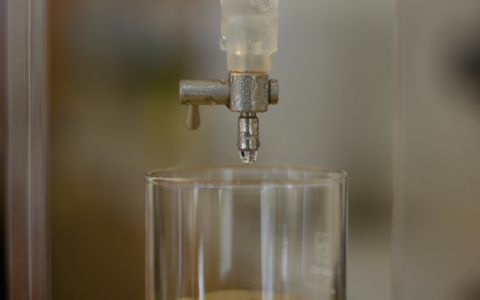About the accident
About the accident
At the end of September 2020, the cyanide leak poisoned almost 40 km of the Bečva River. Fishermen took out 40 tons of dead fish and many remained in the river. The tragedy was caused by cyanides, which flowed into the river through a sewer line from Rožnov pod Radhošťěm, from the area of the former Tesla, to the local part of Valašské Meziříčí called Juřinka.
In connection with the cyanide spill into Bečva, as a result of which the river became basically a dead stream in the section of more than thirty kilometers, the cause of this spill is being sought. In this context, there was also an exchange of information on DEZA and cyanides. Karel Hanzelka, a spokesman of Agrofert, which DEZA group belongs to, denied any connection between the chemical plant and cyanides. The case was investigated by the Czech Environmental Inspectorate (CEI) and relatively soon they ruled out that DEZA was behind the accident, but confirmed that the fish in Bečva were killed by cyanides.
The CEI handed over the case to the Police of the Czech Republic, which announced that it was being investigated as a criminal offense of environmental damage due to negligence. The definite culprit is not yet known, because several companies are connected to the sewer line from which the cyanides got to Bečva. According to a police spokesman, the culprit is facing a sentence of up to six months in prison or a ban on activities.
Arnika responded to the accident by publishing the call "Poisons Free Rivers", which demands, among other things, stricter supervision of cyanides, which could prevent similar accidents in the Czech Republic.

Sign on "Poisons Free Rivers"
Sign on "Poisons Free Rivers" initiative!
The cyanides that have turned Bečva into a dead river are the culmination of more and more frequent leaks of toxic substances into the waters. Water protection has abated due to insufficient monitoring of toxic substances and is also a consequence of the benevolent permitting of other increasing sources of pollution.
We therefore ask:
Proper investigation of the accident that occurred on September 20th, 2020 in Bečva under Valašské Meziříčí, and exemplary punishment of its perpetrators.
Not only cyanides are threatening water, but a number of other chemicals, which are not even measured and its storage in the vicinity of watercourses is not sufficiently limited, also poison life in them. To increase the prevention of water pollution, we therefore call for an improved monitoring of toxic substances, namely:
- For cyanides, lowering of the reporting thresholds to the Integrated Pollution Register (IPR) so that discharges and handling of these highly hazardous substances can be monitored better.
- Reducing the IPR reporting thresholds for other hazardous substances in water discharges and waste.
- Tightening limits on discharges of substances dangerous for aquatic organisms, including copper and zinc.
- Monitoring of a wider range of substances that endanger surface-water as well as drinking-water quality, including a wide range of perfluoroalkylated substances (PFAS). We request their inclusion in the list of substances reported in water discharges and waste (to the IPR).
- Publication of an easily accessible list of old environmental burdens from which toxic substances contaminating aquatic organisms and fish are permanently leaking.
- Elaboration of a plan to reduce the mercury loads on the watercourses and fish.
In Prague and Ostrava on September 26th, 2020
Addressees: Government of the Czech Republic, Minister of the Environment of the Czech Republic, Parliament of the Czech Republic, regional and municipal councils, regional and municipal authorities
Photos: Cases of cyanides poisoning
Photo gallery: Cases of cyanides poisoning
Czech Republic: The case of the river Bečva, where cyanides killed 40 tons of fish, is not the first such case in our history. The whole situation is very reminiscent of the poisoning of the Elbe River by cyanides, which leaked from the Draslovka Kolín in January 2006 and poisoned 80 km of the river, while about 10 tons of fish died. Until then, perhaps the most shocking consequences were caused by the leakage of 150 kg of cyanide into the Jihlava River in 1964, which killed fish populations on 60 km. Another case brings us back to 1981, when due to the discharge of an insufficiently disposed bath with a high content of cyanides and zinc from the Žatec Screw Factory, there was a high death rate of fish in the Ohře River, and the accident also reduced water abstraction for the inhabitants and a number of industrial enterprises. In 1986, Adast Adamov poisoned fish with cyanides and zinc in Svitava, in the area where fish died also in 1983 and 1985 without finding the cause.
Other countries: In January 2000, 100 tons of cyanides leaked from a gold mine in Baia Mare, Romania. The accident affected long areas of the Tisza, Somes and Danube rivers. Due to a 20-tonne cyanide leak in Kyrgyzstan, also in connection with gold mining, two people even died and 600 others had to be hospitalized. During that, "only" 1700 kg got into the water of the Barkshan River and some of it also reached the waters of Lake Issyk - Kul. Cyanide leaks from gold mines also occurred in Ghana - the Ahafo Mine - in 2010. In Tianjin, China, in 2015, a series of explosions occurred in chemical warehouses, with 700 tons of cyanide in it. Also the Fu River below the Chinese city of Wu-chan was poisoned by cyanide in September 2013. In the United States, cyanide water leaked from the Gold King gold mine in Colorado in 2015. In 2019, cyanides also leaked from the local ArcelorMittal plant in Portage, Indiana. The Ngagane River in KwaZulu-Natal, South African Republic, was contaminated by cyanides in 2012, poisoning the cows drinking from it.
{gallery}Cyanides Becva 2020{/gallery}
Cyanides
About cyanides
Cyanides are a group of substances containing a cyanide group (C≡N). To a small extent, cyanides are a natural part of the environment – human life is mostly responsible for life-threatening concentrations. They are released into the environment mainly during combustion processes, from industrial plants (engineering, chemical industry), as well as from unsecured landfills and old environmental burdens. Due to their binding to respiratory enzymes, they pose a danger to all oxygen-breathing organisms. They are highly toxic, especially in the aquatic environment. Humans can be exposed to cyanides by inhalation, ingestion and skin contact. At lower doses, nausea, headache, fatigue and other signs of lack of oxygen appear. At higher doses comes a coma and death. Chronic exposure leads to increased blood cyanide levels, the development of deafness, night blindness, or gait disorders.
Cyanides are used mainly in metallurgy (mining, plating, steel production) and in the chemical industry (production of plastics, rubber, explosives, etc.). In the atmosphere, cyanide is most often present as hydrogen cyanide gas. Some of the cyanides can be bound to solid particles and deposited back on the ground. Hydrogen cyanide gas is able to survive in the atmosphere for up to 3 years. Cyanides are unstable and very mobile in soil and water.









